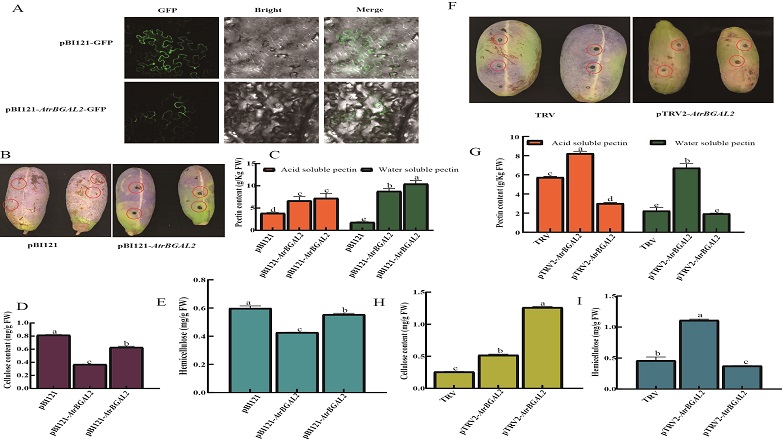
Recently, researchers from Institute of Bast Fiber Crops of Chinese Academy of Agricultural Sciences, Jingdezhen University, and Yichun Institute of Science have found that the AtrBGAL gene plays an important role in fruit cracking of Akebia trifoliata , which is of great significance for the utilization of the resources as well as for post-harvest storage and preservation of Akebia trifoliata .
As a characteristic fruit tree in China, the whole plant of Akebia trifoliata has high medicinal, economic, social and ecological value, and can be developed as a medicinal and food cash crop with a very broad application prospect. While when the fruit matures, the pericarp of A. trifoliata cracks longitudinally along the ventral suture, which is susceptible to bird and insect feeding and bacterial contamination, resulting in serious damage to the yield and economic benefits. Cracking also reduces the fruit's commerciality, storage and transportation performance, limiting the fruit's market value and industrial development potential. However, the research on A. trifoliata fruit cracking and storage and freshness preservation is lagging behind. Therefore, the research on the molecular mechanism of fruit cracking of A. trifoliata is of great theoretical significance and application value for solving the problems of post-harvest storage and freshness preservation of A. trifoliata .
In this study, the genetic variation and its environmental adaptive mechanism of A. trifoliata were systematically investigated by using genomic, transcriptomic, cell structure, gene expression, genetic transformation, transient overexpression and suppression of expression, relying on the platforms of the National Bast Fiber Crop Germplasm Resource Nursery and the A. trifoliata Resource Nursery. The regulatory role of β-galactosidase gene ( AtrBGAL2 ) in the process of fruit cracking in A. trifoliata was clarified. Overexpression (OE) of AtrBGAL2 resulted in early fruit cracking, higher water-soluble pectin contents, and lower acid-soluble pectin, cellulose, and hemicellulose content compared to the wild type. Whereas silencing of AtrBGAL2 in A. trifoliata by virus induced gene silencing showed opposite trends. The same trend was shown in tomato fruits overexpressing and gene editing the AtrBGAL2 gene, suggesting that AtrBGAL2 plays an important role in regulating fruit cracking during fruit ripening. This work provides a new perspective for the study of the mechanism of fruit cracking, which is of great significance for the resource utilization of A. trifoliata as well as postharvest storage and preservation.
This work was financially supported by the Natural Science Foundation of Hunan Province , the Natural Science Foundation of Jiangxi Province, and National Nanfan Research Institute, Chinese Academy of Agricultural Sciences. The study entitled “The β-galactosidase gene AtrBGAL2 regulates Akebia trifoliata fruit cracking” has been published online in International Journal of Biological Macromolecules and can be accessed through the following link: https://doi.org/10.1016/j.ijbiomac.2024.133313.

Fig. Subcellular localization and transient transformation of AtrBGAL2.

